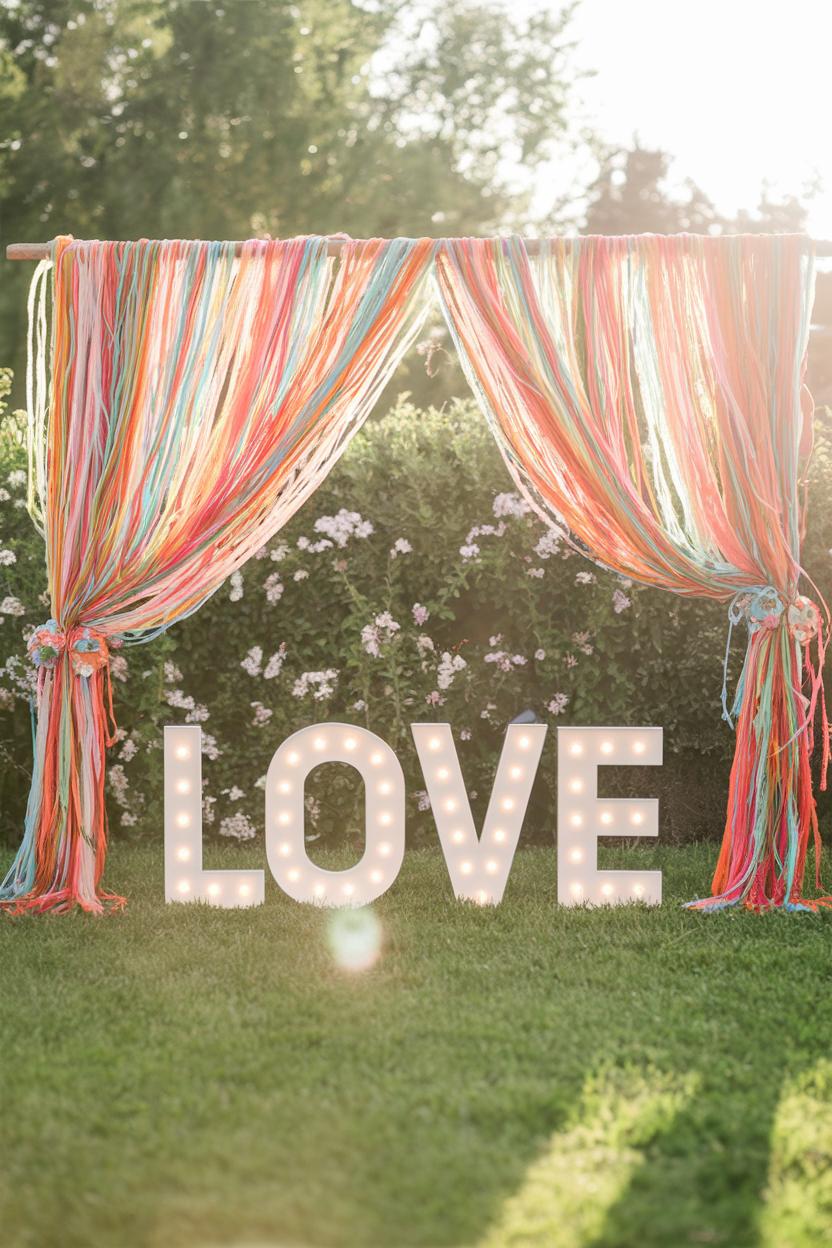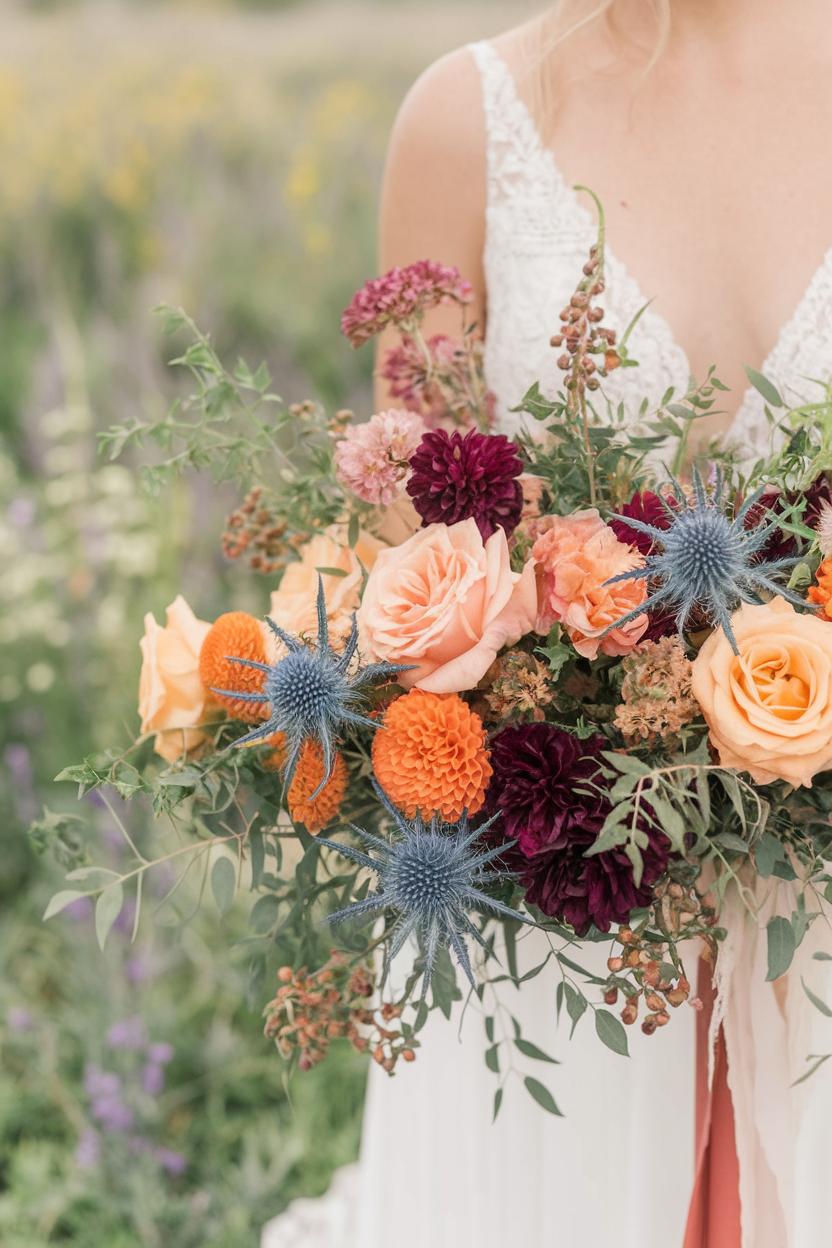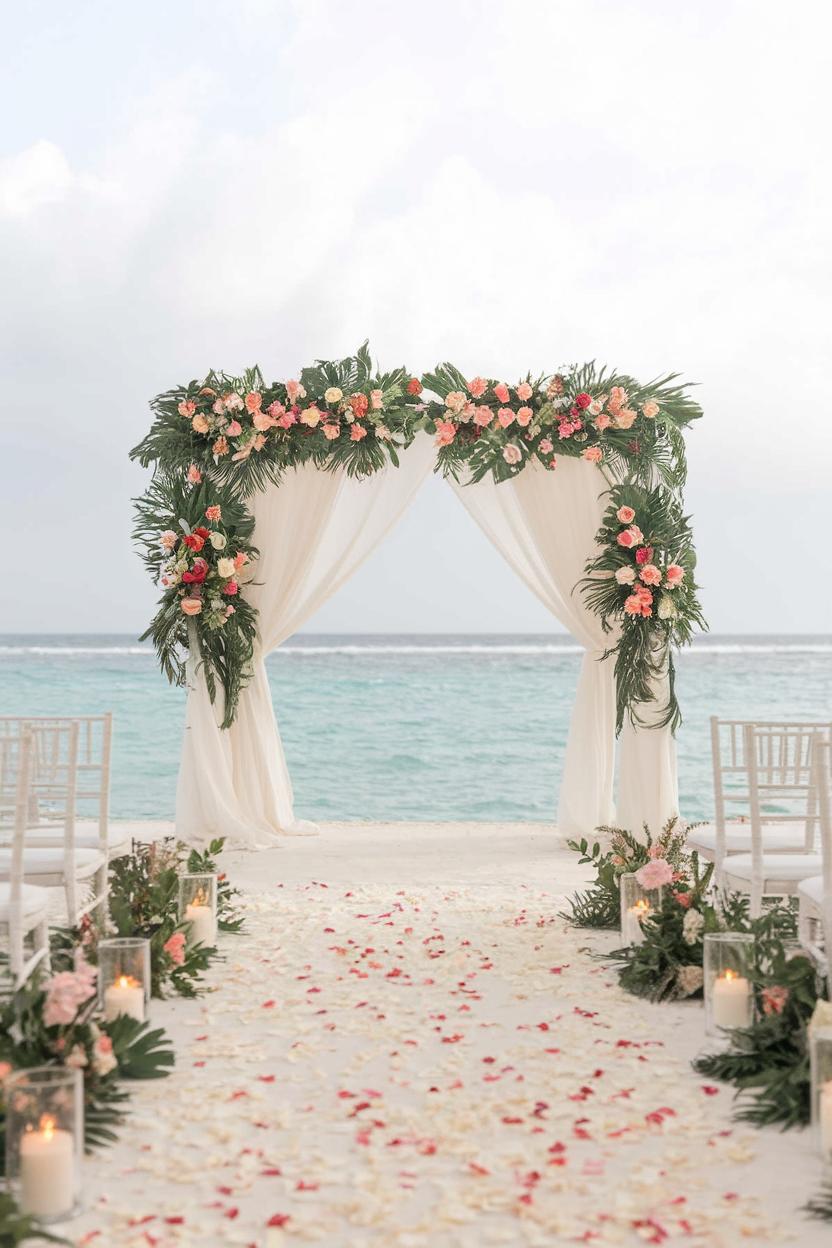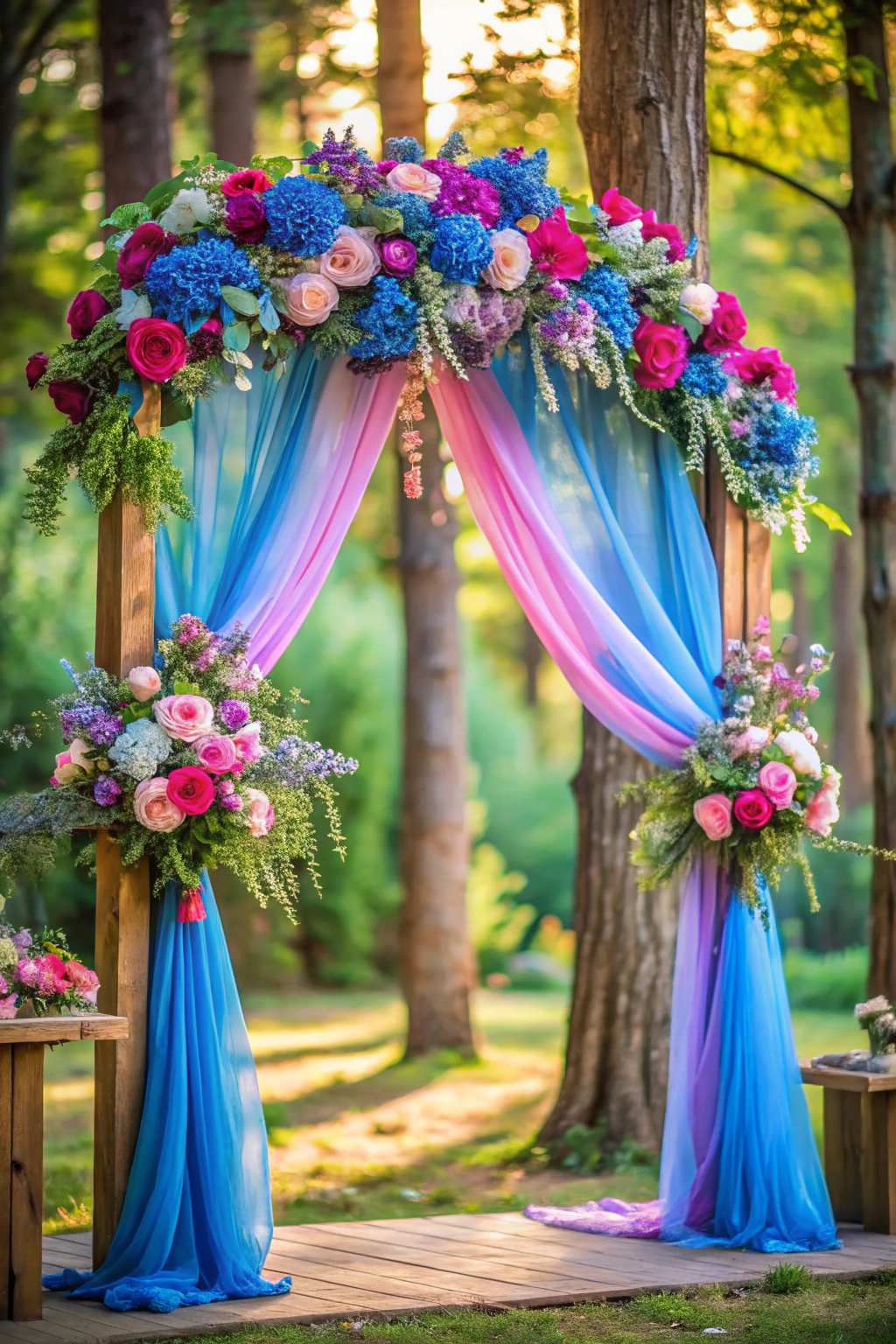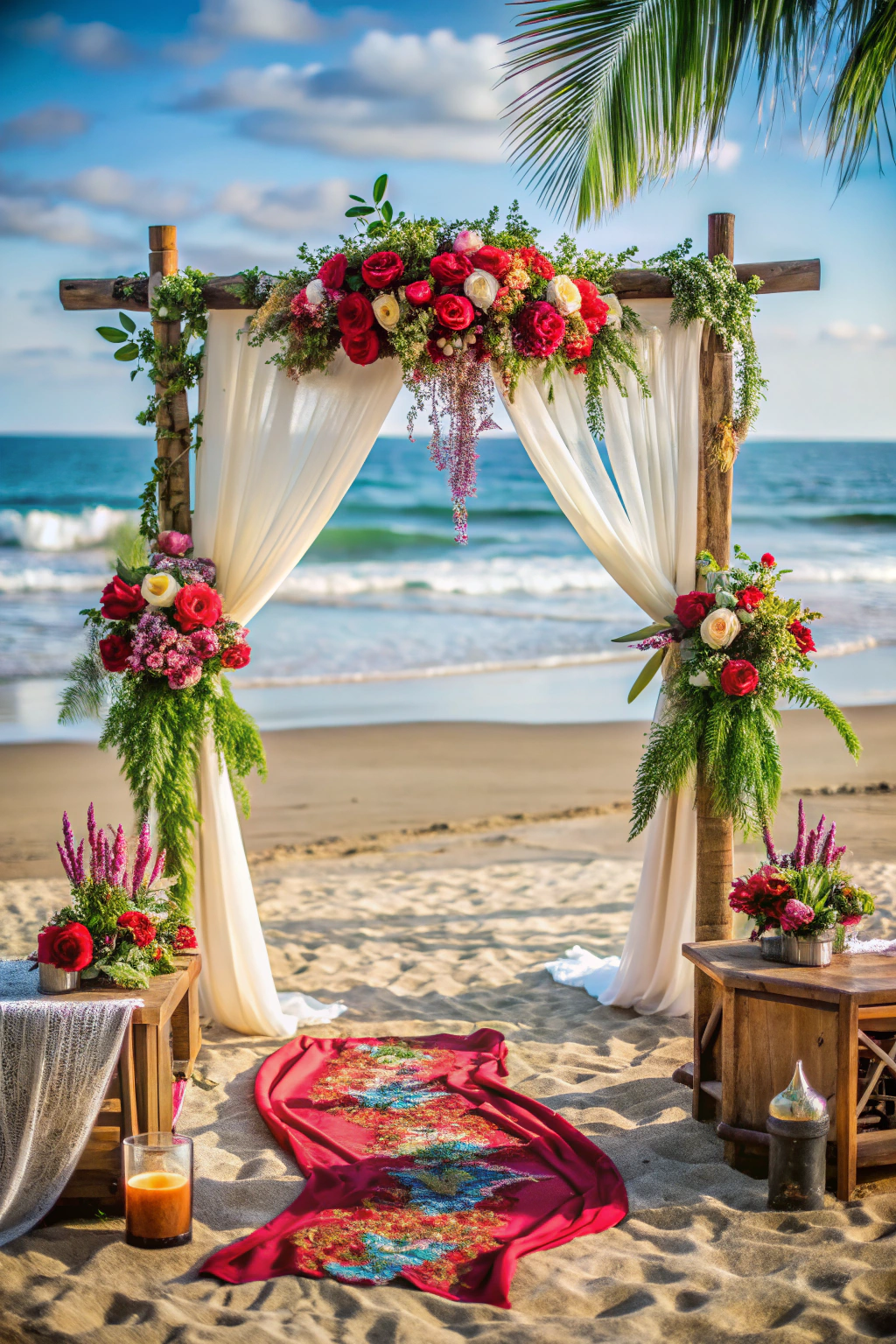Crafting the perfect wedding invitation wording can be a fine balancing act, but fear not, this article will guide you through various traditional and contemporary wording styles that can help you create an accurate yet endearing first impression.
Key takeaways:
- Include host line, request line, names, date/time, location.
- Wedding invitation follows a traditional structure.
- Reception info can be included on the invitation or separate card.
- RSVP card should be clear and match the tone of the invitation.
- Examples provided for different wedding invitation styles.
What to Include On Your Wedding Invitation
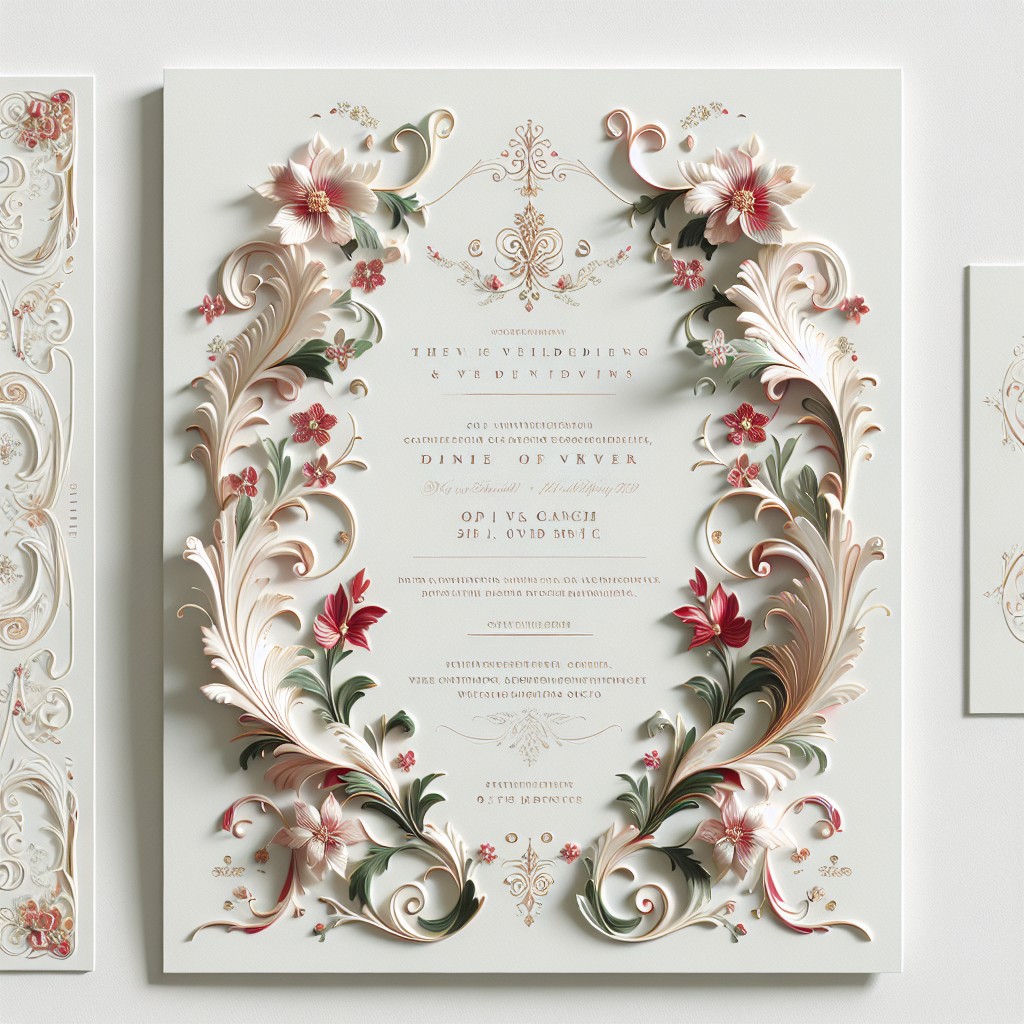
Ensuring your wedding invitations contain all the necessary details is crucial for your guests to have the information they need. Here are the key elements to include:
1. Host Line: Begin with who is hosting the wedding, which traditionally refers to the parents, but can also include the couple themselves.
2. Request Line: This is where you invite your guests to the occasion, using phrases like “request the pleasure of your company” for a formal tone, or “invite you to celebrate with us” for something more casual.
3. Names of the Couple: Traditionally, the bride’s name precedes the groom’s, but you can choose the order that aligns with your preference.
4. Date and Time: Write out the date in full (e.g., the eighteenth of June) and indicate the time (e.g., at half past four in the afternoon).
5. Location: Provide the full address of your wedding venue. If it’s a well-known location, the name might suffice.
6. Dress Code: Specify the expected attire, such as black tie, cocktail, or casual, if you have a preference.
Remember, consistency in your wording style reflects the formality of your event and sets the tone for your celebration.
Wedding Invitation Wording Line By Line
Crafting a wedding invitation involves a traditional structure that guides guests through the essential details of your special day. The host line, at the top, begins the invitation by announcing who is inviting the guests to the celebration, typically the parents of the bride or the couple themselves. Next, include the request line, a phrase that invites recipients to attend the wedding, such as “request the honor of your presence.”
The names of the couple follow, with the bride’s name traditionally listed first on heterosexual invitations. If the bride’s parents are mentioned above, her last name may be omitted. Provide the date and time details, spelling out numbers for a formal tone. Venue information comes next, with the location receiving its own line for clarity.
Optionally, a dress code can be included at the bottom if specific attire is required, ensuring guests arrive suitably dressed. Lastly, the reception line may inform guests whether the celebration will continue at the same location or a different venue, unless included on a separate card.
Every line serves a purpose, guiding invitees gracefully from who is hosting to what to wear, encapsulating the event’s essentials in a clear, organized manner.
Reception Information
Including reception information directly on the wedding invitation is a practical choice if the celebration is at the same location as the ceremony. A simple line such as “Reception to follow” or “Dinner and dancing to follow” at the bottom of the invitation suffices.
If the reception is at a different venue, consider a reception card with the festivities’ address and start time. This card can mimic the style of your main invitation for a cohesive look. Always ensure the information is clear and concise, guiding guests seamlessly from your ceremony to the celebration.
When space is at a premium, or for a minimalist aesthetic, incorporating a line that directs guests to a wedding website for additional details is a modern, eco-friendly solution. This approach not only saves paper but allows you to provide updates and additional information as needed.
Separate RSVP Card
When designing your RSVP card, clarity is key.
Include a line for guests to write their names and a checkbox or a line for them to indicate their attendance choice.
You may also want to ask for meal preferences if you’re offering menu options, and include a deadline for responses.
Ensure the card comes with a pre-addressed and stamped return envelope or, for a modern twist, provide an online RSVP option to streamline the process.
Remember, the tone of your RSVP card should match that of your invitation suite.
Wedding Invitation Wording Examples
Understanding the etiquette can shape your wedding invitations beautifully. Consider these examples as a guide:
Traditional Invitation:
Mr. and Mrs. John Smith
request the honor of your presence
at the marriage of their daughter
Emily Rose
to
Michael Ethan Jones
on Saturday, the twenty-fourth of June
two thousand twenty-three
at half-past four in the afternoon
Grace Cathedral
San Francisco, California
Casual Invitation:
Emily Rose Smith & Michael Ethan Jones
are tying the knot!
June 24, 2023, at 4:30 pm
Grace Cathedral, San Francisco
Dinner, dancing, and merriment to follow
Join us for the celebration!
Informal Invitation with Reception at Same Venue:
Join us for the wedding of
Emily & Michael
June 24, 2023, at 4:30 pm
Grace Cathedral
Reception to follow
Parents Divorced and Remarried, Both Sets Hosting:
Mr. and Mrs. John Smith
and Mr. and Mrs. Robert Johnson
invite you to celebrate the marriage of
Emily Rose Smith
to
Michael Ethan Jones
etc.
Same-Sex Couple:
Alex Martin White and
Samuel David Thompson
request the pleasure of your company
at their wedding
etc.
Each format serves as a foundation, tailor them to reflect your style and story while maintaining clarity and the necessary information for your guests.
FAQ
What is the correct wording for a wedding invitation?
The correct wording for a formal wedding invitation could be, "The honor of your presence is requested at the marriage of," or "You are cordially invited to celebrate the marriage of," or "We invite you to share in our joy and request your presence at the wedding of".
What is an example sentence for wedding invitation?
An example sentence for a wedding invitation could be: "Mr. and Mrs. Smith request the pleasure of your company at the marriage of their daughter, Jane Smith.
How do you write a wedding invitation message?
A wedding invitation message can be written as follows: "You are cordially invited to celebrate love and happiness with us at [Bride's Name] and [Groom's Name]'s wedding ceremony on [Date] at [Time] at [Venue]; your attendance will greatly honour us.
How do I write a good invite message?
A good invite message should be cordial and informative, and may follow formats such as "You have been cordially invited to…[event details]", "Please accept this warm invitation to join us at…[event details]", or "Make no plans on [event date], you have been invited to join us for a memorable time with family and friends.
How do you incorporate both sets of parents in a wedding invitation wording?
Incorporating both sets of parents in a wedding invitation wording can be achieved by mentioning both the bride's parents and the groom's parents as hosts, such as "Mr. and Mrs. Bride's Parents & Mr. and Mrs. Groom's Parents cordially invite you…
How can you convey the formality of your occasion through the wedding invitation wording?
The formality of the occasion can be conveyed through the wedding invitation wording by choosing elegant language, adhering to traditional formats, using full names for the bride and groom, and explicitly stating the dress code or theme of the event.
What are some creative twists to traditional wedding invitation wording?
Incorporating poems, quotes, song lyrics, or unique phrases tailored to the couple's story offers a creative twist to traditional wedding invitation wording.
